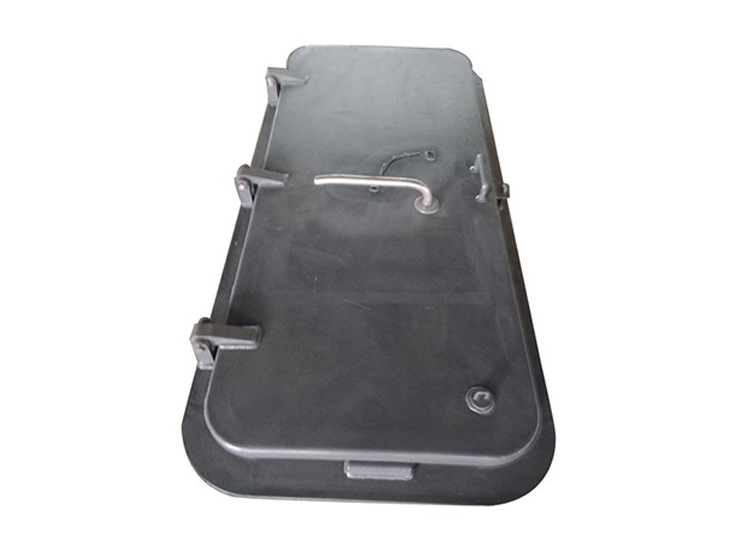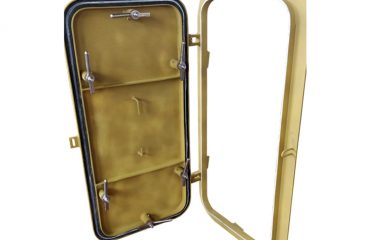Marine watertight steel doors are critical safety components in ships and offshore structures, designed to prevent water ingress between compartments. Their ability to seal tightly even in rough seas or emergency situations protects crew, cargo, and the vessel itself—making them indispensable for maritime operations.
The structural design of these doors prioritizes durability and water resistance. Constructed from high-grade steel (such as ASTM A36 or AH36), they withstand corrosion from saltwater, extreme temperatures, and mechanical stress. The core feature is the sealing system: most use rubber or neoprene gaskets embedded in the door frame or door edge. When closed, a clamping mechanism (manual or hydraulic) compresses the gasket against the frame, creating a watertight barrier. Hinges are reinforced to support the door’s weight, while latches and locking devices are designed to stay secure during heavy vibrations or tilting—common in stormy conditions. Some doors also include pressure relief valves, which equalize pressure between compartments before opening, preventing damage to the seal.

Types of marine watertight steel doors vary by function and location. Hinged watertight doors are the most common, used for regular access between compartments (e.g., in crew quarters or cargo holds). They open inward or outward, depending on the compartment’s purpose—outward-opening doors are often used in areas at risk of flooding, as water pressure helps keep them sealed. Sliding watertight doors are ideal for tight spaces (like engine rooms or narrow corridors) where hinged doors would take up too much room. They slide horizontally along tracks, with seals that activate when locked. Quick-closing watertight doors (manual or automatic) are installed in critical areas, such as near the hull or in fire zones. Automatic versions can be triggered by water sensors or central control systems, closing within seconds to contain flooding during emergencies.
Compliance with global safety standards is non-negotiable for these doors. The International Maritime Organization (IMO) sets strict requirements via the International Convention for the Safety of Life at Sea (SOLAS). SOLAS mandates that watertight doors meet specific pressure ratings (e.g., withstanding 0.2 MPa of water pressure for doors below the waterline) and undergo regular testing. Classification societies like DNV GL, Lloyd’s Register, and ABS also issue certifications, verifying that doors meet material, design, and performance standards. These certifications ensure interoperability and safety across vessels worldwide.
Maintenance is key to preserving the doors’ functionality. Regular inspections (monthly or quarterly) should check for gasket wear—cracks, hardening, or missing sections can break the watertight seal. Steel surfaces need examination for rust or corrosion; any damage should be cleaned, sanded, and repainted with marine-grade anti-corrosive paint. The clamping and latching mechanisms require lubrication with seawater-resistant oil to prevent jamming. Annual pressure testing is recommended: doors are sealed, and water pressure is applied to simulate flooding, ensuring no leakage occurs. Additionally, crew training is essential—personnel should know how to operate manual doors quickly and troubleshoot basic issues, as delays in closing doors during emergencies can lead to catastrophic flooding.





